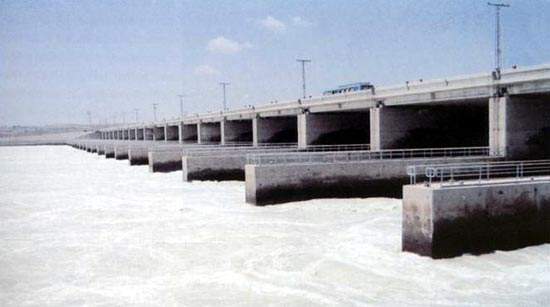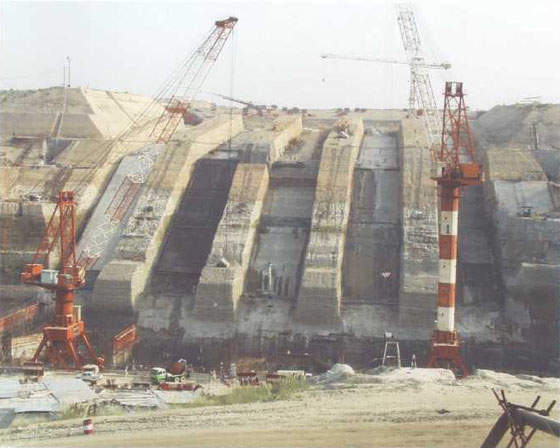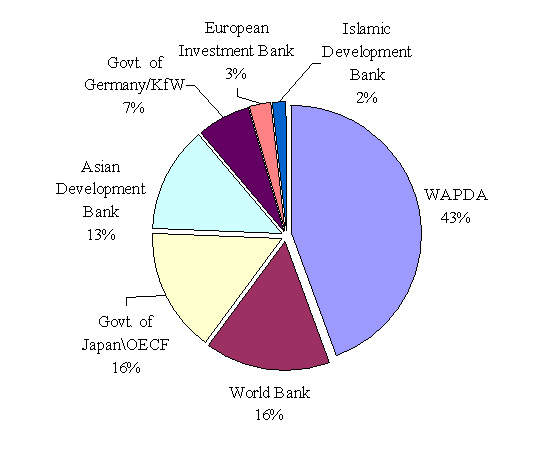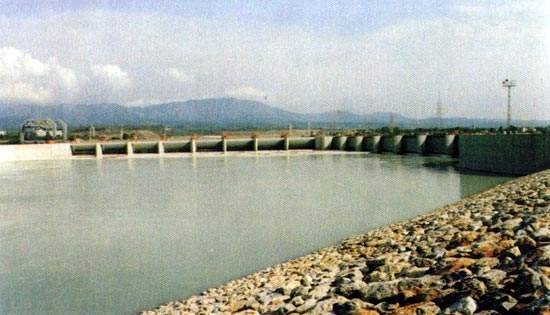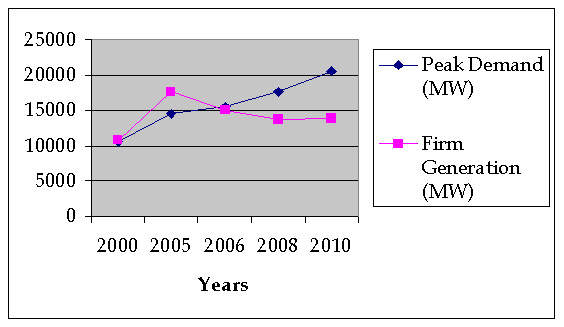The run-of-river Ghazi Barotha Hydroelectric project is located around 100km from Islamabad, on the Indus River in north west Pakistan. It involved the construction of a partial river diversion at Ghazi, 7km downstream from the Tarbela dam.
The barrage diverts water into a 52km concrete-lined channel and delivers it to the 1,450MW powerhouse at Barotha. This is further downstream, near the confluence of the Indus and Haro rivers. In this reach the Indus River drops by 76m within a distance of 63km. After passing through the powerhouse, diverted water is returned to the Indus. In addition to these main works, transmission lines stretch 340km.
RUN-OF-RIVER ENERGY PROJECT
The consultant for the project was Pakistan Hydro Consultants, a joint venture comprising Harza Engineering Company of the US, Ewbank Preece and Binnie, Black & Veatch, (both of the UK) and two local firms, National Engineering Services Pakistan (Nespak) and Associated Consulting Engineers.
A consortium led by Italy’s Impregilo, and including Campenon Bernard, Ed Zueblin and local contractors Saadullah Khan & Brothers and Nazir & Company, constructed the barrage and power channel for $510 million. China’s Dongfang Electric Corporation was awarded the $214 million contract to construct the powerhouse and associated infrastructure facilities.
FRANCIS TURBINES
Voith won the contract for the delivery and assembly of five 295MW Francis turbines. To operate the power station, water from the Indus is directed to the turbines via a 52km-long canal and five pressure pipelines, each measuring 10.6m in diameter. The head of water at the power station is 69m. The flow rate through each turbine at rated power is 485m³/s, with each turbine runner having a diameter of 6.5m.
A Japanese company supplied the generators. Austrian VA Tech Voest obtained an order for penstocks. The five units have an outer diameter of 10.6m, a total weight of 9,300t and cost around $12 million.
POWER TRANSMISSION LINE
The construction of a 225km, 500kV transmission line, a new 500/22kV substation, and the extension of two further substations was partially funded by the Kuwait Fund for Arab Economic Development.
CONSTRUCTION DELAYS AND PROBLEMS
Delays, including project funding, labour disputes and contractor payments, were a problem throughout construction. In September 1997, the project stalled as the Pakistan government had not matched funding by the donor companies, due to government deficit cutting measures prompted by the IMF. Some of the plans for bridges and culverts associated with the project had to be abandoned.
In 2001 the World Bank, which is one of the main sponsors for the project, threatened to withdraw funding. This dispute stemmed from the government’s questioned ability to resettle the 900 inhabitants of the area.
SPONSORSHIP
Completed in 2003, the project was sponsored by the government-owned Water and Power Development Authority (WAPDA). It identified the Ghazi Barotha project as an opportunity to build a large-scale installation with minimal disruption. At 1,450MW, the plant accounts for over 10% of current Pakistani capacity, making a major contribution to its expansion programme. Resettlement was limited to around 900 people. Ghazi Barotha is a run-of-the-river plant, with no need for massive dams or reservoirs.
Pakistan’s energy strategy is to encourage thermal Independent Power Producers (IPP), but to undertake selected hydropower projects nationally. In this way they both hope to attract managerial and operational skills as well as financing from the private sector, whilst developing the most economically viable hydro projects in an environmentally acceptable manner. The Ghazi Barotha project was particularly attractive as provides power to meet peaks in demand throughout the year and allows full power generation during the months of May and June when low reservoir levels mean that output from other hydropower projects is reduced.
Power demand and supply in Pakistan was expected to create a considerable deficit by 2010. The Ministry of Power and Water therefore devised a plan for future projects (both thermal and hydro) called ‘Vision 2025’.
FUNDING
A consortium provided financing. WAPDA accounted for the lion’s share – it tapped internal resources to invest $1 billion (44.4%) of the total $2.25 billion. Multilateral lending to the Pakistan government was the second most important funding source. Asian Development Bank (ADB) estimates put the foreign exchange component at 63% of the total cost, and the local component at 37%. The World Bank provided a 20-year loan of $350 million, and the ADB a 25-year loan of $300 million. National development funds covered most of the remainder, with Japan’s Overseas Economic Co-operation Fund offering $350 million and Germany’s Kreditanstalt für Wiederaufbau (KfW) $150 million.
The package played a central role in the successful launch of the project. WAPDA’s debt service burden will be lightened by generous terms during the construction period, and the utility did not have to contend with the difficulties of raising commercial finance. The financing is also designed to withstand future pressures; the financial internal rate of return of 13% in real terms is comfortably above the ADB estimated real cost of capital of 6.6%.
In 1998 the Kuwaiti government loaned the government of Pakistan $30 million for the purchase of transmission equipment related to the Ghazi Barotha project.

